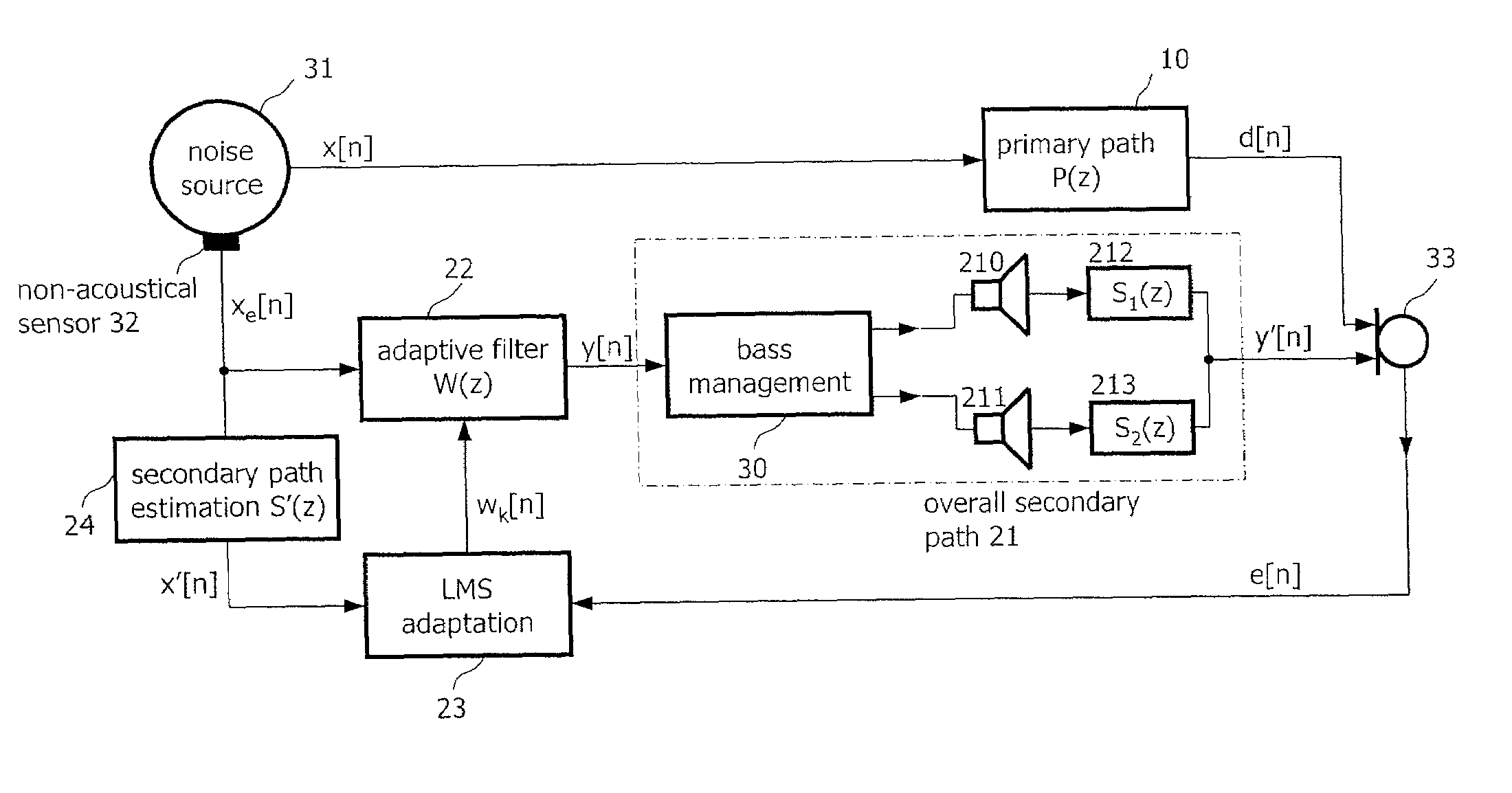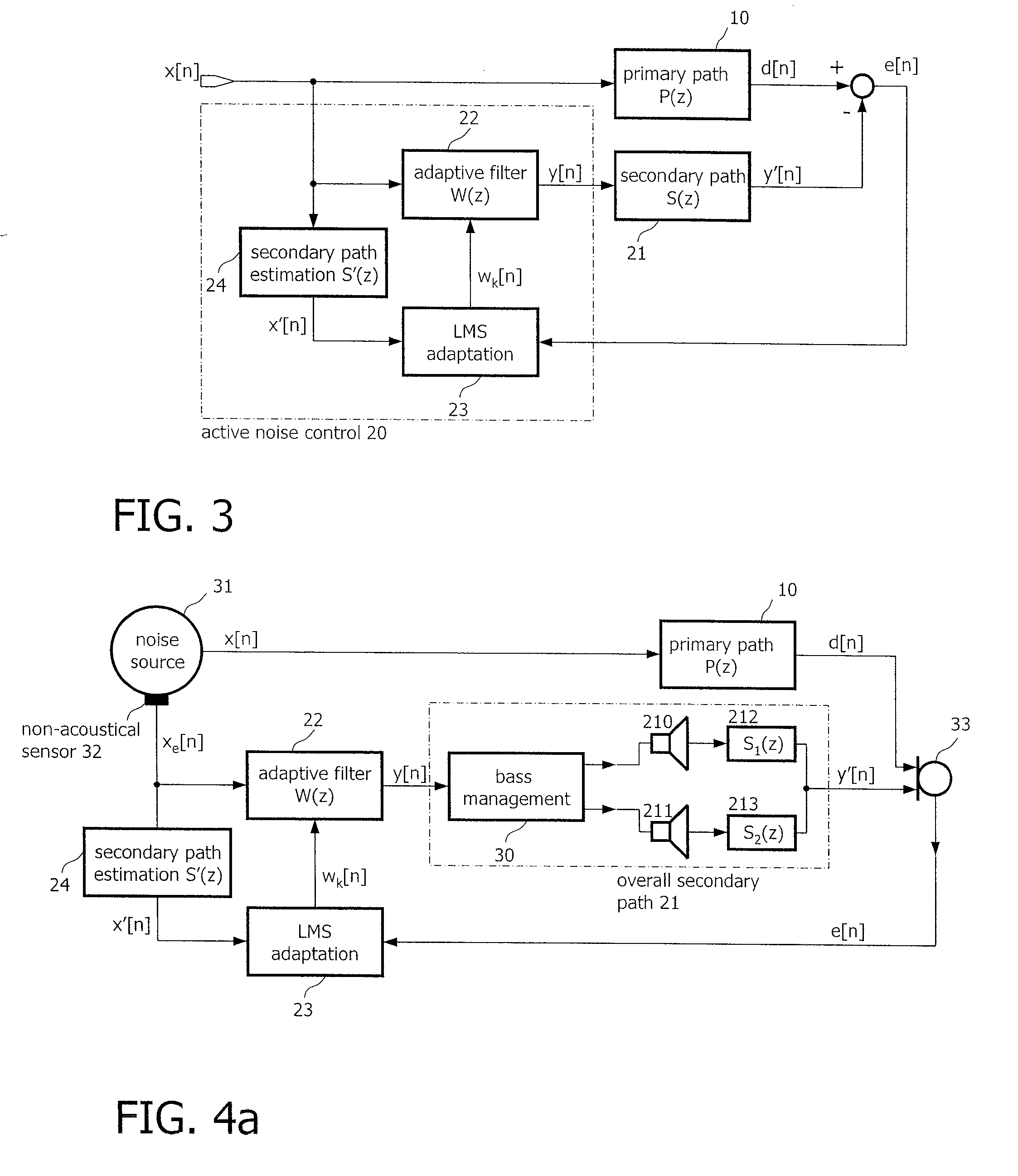Active noise control using bass management
a technology of active noise control and bass management, applied in the direction of noise generation, ear treatment, instruments, etc., can solve the problems of destructive interference, inability to achieve reasonable technical implementation, and inability to yield the desired effect, etc., to achieve the effect of enhancing the active noise control system
- Summary
- Abstract
- Description
- Claims
- Application Information
AI Technical Summary
Benefits of technology
Problems solved by technology
Method used
Image
Examples
Embodiment Construction
[0027]Active noise control systems may either be implemented as feed-forward structures or as feed-back structures. In a feed-forward structure the acoustic actuator, which generally is a loudspeaker or a set of loudspeakers, is supplied with a signal correlated with the disturbing noise signal that is to be suppressed. In contrast, in a feed-back structure the respective error signal is fed back to the loudspeaker. Feed-forward structures may be preferred for active noise control because they are easier to handle than feedback systems. The following discussion considers mainly ANC systems with a feed-forward structure, however the present invention is also applicable to active noise control systems realized in a feed-back structure. Furthermore, in the figures all signals are regarded as digital signals. Analog-to-digital and digital-to-analog converters as well as amplifiers which are necessary in practice, for example, for sensor signal amplification, are not depicted in the foll...
PUM
 Login to View More
Login to View More Abstract
Description
Claims
Application Information
 Login to View More
Login to View More - R&D
- Intellectual Property
- Life Sciences
- Materials
- Tech Scout
- Unparalleled Data Quality
- Higher Quality Content
- 60% Fewer Hallucinations
Browse by: Latest US Patents, China's latest patents, Technical Efficacy Thesaurus, Application Domain, Technology Topic, Popular Technical Reports.
© 2025 PatSnap. All rights reserved.Legal|Privacy policy|Modern Slavery Act Transparency Statement|Sitemap|About US| Contact US: help@patsnap.com



